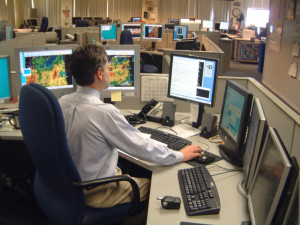 Once a person decides to become a meteorologist, no matter the age, the path is at first abstract. The trick is to extract it from the realm of abstraction so it can be brought into concrete reality. In order to manage this feat, one has to become acquainted with all the hurdles that will require a great deal of effort to overcome. With an early knowledge of these hurdles, one can prepare themselves properly and exercise all the muscles they will need to keep themselves on track.
Once a person decides to become a meteorologist, no matter the age, the path is at first abstract. The trick is to extract it from the realm of abstraction so it can be brought into concrete reality. In order to manage this feat, one has to become acquainted with all the hurdles that will require a great deal of effort to overcome. With an early knowledge of these hurdles, one can prepare themselves properly and exercise all the muscles they will need to keep themselves on track.
Preparation
One of the keys to succeeding in any endeavor is preparation. Take as many math classes as possible including: geometry, trigonometry, and calculus. Also, take physical science and chemistry classes. However, math and science is only part of the story. Communication is an important part of being an atmospheric scientist, so taking a speech class along with writing composition classes are important concepts that lay the groundwork for what is to come. In addition to taking math, science, and writing classes, computer classes should be utilized. They will prove to be equally useful.
Initiative
After completion of secondary school, the next goal should be to find an undergraduate program that prioritizes the needs and interests of the student and will also meet all the requirements under federal guidelines, according to the American Meteorological Society. Additionally, the National Weather Service is another source as well as a consistent employer of meteorologists. The American Meteorological Society also has a list of undergraduate programs and contact information, this way a student can get in contact with faculty members as well as departments that they are interested in.
The Bachelor’s Degree
A few steps to take once one has entered the undergraduate program of their choice, is to meet up with a meteorological adviser and create a plan that will direct and keep them on their course for the next four years. The meteorological adviser can advise the student on which courses to take with which semester and also provide them with information regarding internship opportunities. The student can ask about internship opportunities taking place at a television station, an energy firm, or the private sector. Internships provide a preview into potential careers and provide insight into the job market. If the student gives their all, they might impress employers and consequently establish a good network of contacts.
The Requirements
A bachelor’s degree is the minimum requirement for becoming a meteorologist. Additionally, those who seek a more in depth knowledge of meteorology along with research position opportunities go on to pursue a master’s degree. A master’s degree also provides a competitive edge in the job market, likewise a minor in computer science, business, or communication during undergraduate will show up on the transcripts of a job seeker separating them from other applicants. Finally, a Ph.D in atmospheric science is required for college-level positions in research and teaching.
Related Resource: National Weather Service
Ultimately, if the person is persistent and proactive during college, job opportunities will reveal themselves upon completion. When they do manifest, the person can finally reveal themselves as the meteorologist they, after much difficulty, set out to be.